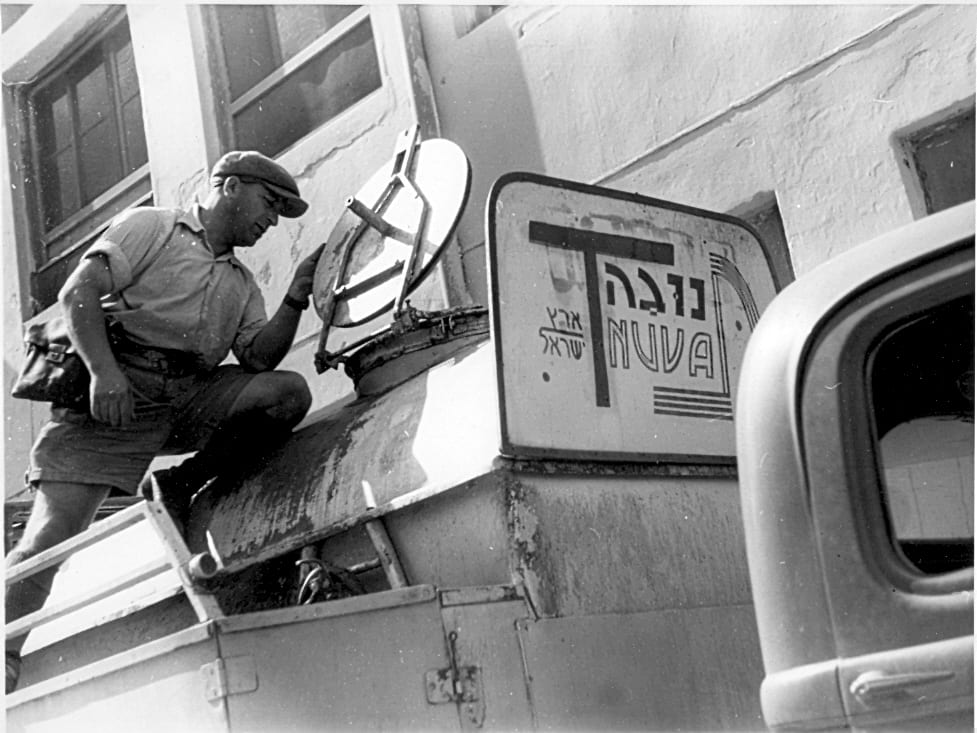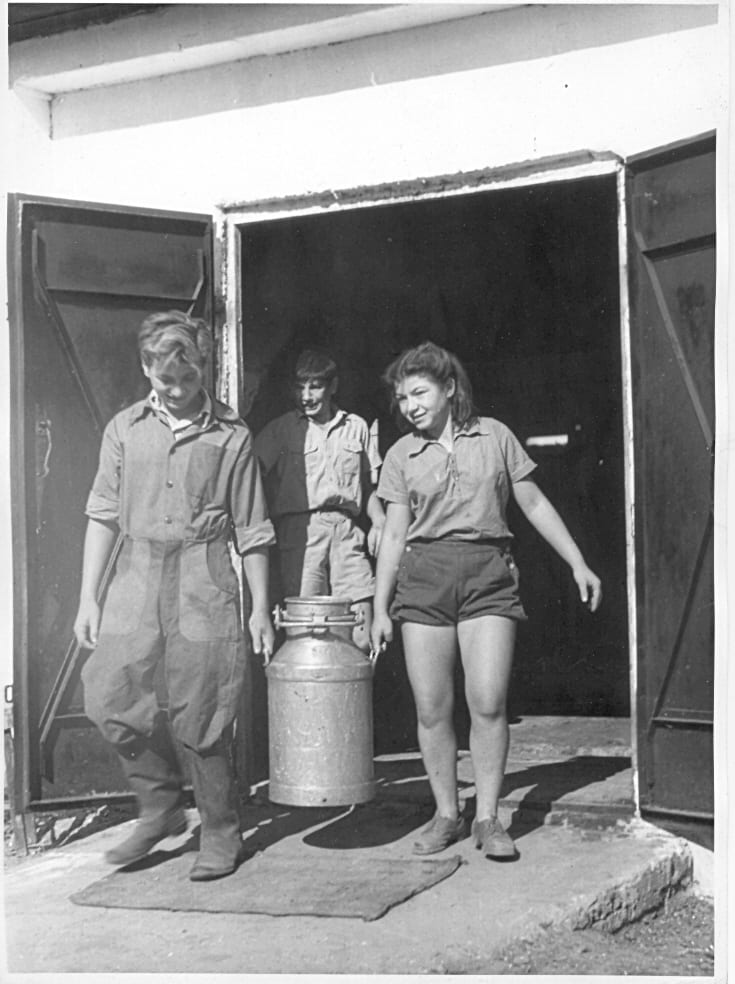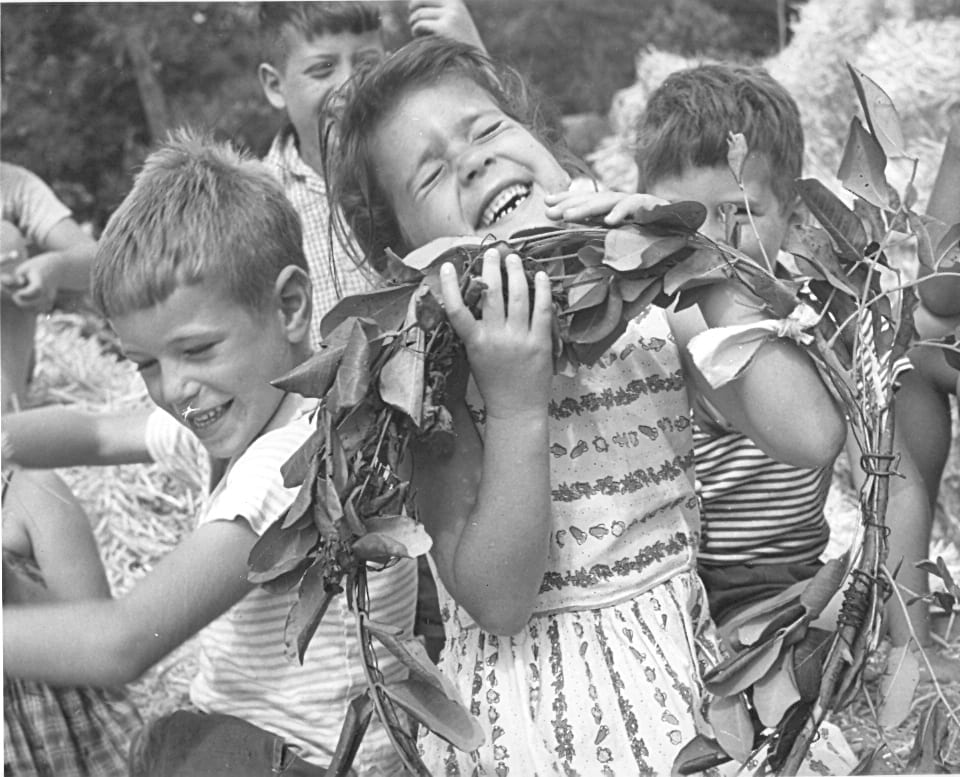In the early 1990s, when commercial t.v. was first introduced in Israel, we finally learnt why we celebrate Shavuot. Cool creative copywriters brain stormed in their fancy agencies and fabricated for us the following story: 4,000 years ago, while crossing the Sinai desert on their way to the promised land, the Children of Israel suffered acute low levels of calcium, resulting in a variety of bones diseases, that made desert hiking almost impossible. God heard their cry and provided them with Manna, a substance made of wheat and honey, known for its curing qualities.
To his disappointment though, they went on complaining. Feed us with calcium containing milk! They demanded. The chosen people’s bitterness reached its peak in an event that commentators marked as the first consumers’ uprising ever – erecting the iconic golden calf, drifting milk drops. Picking up the subtle hint, the Lord sent Moses to Zin (phonetically close to Sinai), where, it was told, the patriotic Israeli dairy corporation called “Tnuva” was located. 40 days later Moses returned to the desert, mounting a flying chunk of Gouda cheese and carrying the requested goods – and the rest is cheestory.
And now for real: inasmuch as there is no real connection between the High Holidays and eating fish, or between Independence Day and Barbecue, there is no real connection between Shavuot – The Giving of the Torah holiday, and eating dairy products. As always, relentless consumerism, supported by cynical advertising spheres, appropriated this lovely holiday without batting an eyelid. We are all products, holidays included.

Indeed, there are a few popular references to Shavuot in relation to dairy foods. According to one, for example, the number 50 marks 50 days from Passover to Shavuot, while its numerical added value is in Hebrew: dairy. Well, so do hundreds of other words… another origin is explained as the acronym of the verse Numbers 28, 26: “in the day of the firstfruits, when ye bring a new meat offering unto the LORD, after your weeks be out”, which in Hebrew forms the word for milk. This is somewhat problematic, because firstfruits refer to plants, whereas milk is, well, not a plant, but the money growing on the metaphorical trees of the dairy companies is. The Mishna specifically determines that firstfruits only mean the seven species, that to our best knowledge do not include Parmesan cheese.
The most common grounds for enjoying dairy on Shavuot is that in Matan Torah, the giving of both written and oral law, all rules and restrictions regarding butchery and eating were introduced, therefore the children of Israel were not able to use their impure kitchenware for cooking for the holiday, so they had dairy dishes, that are easy and quick to prepare without having to use items that turned out to be not kosher. The chronological failure of this reason screams up loud: was the holiday of Matan Torah regulated on the very same day of the Torah giving?

One Hasidic tale with a feminist touch, goes about one smart assertive woman in a Jewish Shtetl, who happened to be the rabbi’s wife. She felt hated the idea of women not taking part in studying along with the men, so she went to the rabbi and elders, accompanied by a few fellow women, and demanded that women would be allowed to study Torah. The men naturally objected, therefore the women went on a strike and stopped cooking and washing.
It was Shavuot eve, and the town’s rich man ended his prayer and returned home he found no dinner on the table. Baffled, he stood at his window and saw the other men standing in their windows, dinnerless and amazed. All the wives were nowhere to be seen.
After a short investigation it was found out, that the rabbi’s wife provoked all the wives. The rabbi was embarrassed, then furious, and then he summoned all the town’s women and announced that should they not go straight and narrow, he shall cancel the Jewish polygamy prohibition. That scared the women and they rushed home to prepare dinner, however as it was almost sun set, they only had enough time to prepare a dairy meal before the holiday.

A few more anecdotal interpretations regarding the milk in Shavuot were enough for the large dairy corporations to use the holiday for their annual balance sheets. The 1980s neo-liberalism, and commercial t.v. that came along a decade later, broadened the trend to that point that the equation milk=Shavuot became irrefutable.
It is our duty to fight this and stress the true sublime values of this holiday. First, we need to think how to recreate the firstfruits celebrations at the temple, that symbolized the deep affiliation between the nation and its county, and the farmers’ gratitude for the land’s yields. WE also need to learn from the story of Ruth about the welcoming of the foreign, thus encourage a reform in the existing conversion models. For Ruth, that Moabitess young woman who had every reason to turn her back on her mother in law, chose to stick with her, and her reward was to be the foremother of King David. We also need to remember that Shavuot is first and foremost the Torah Giving holiday, and whether you believe the Torah is divine or not, it is one of the most beautiful, powerful and wonderful texts in the history of humankind.
So instead of crying over spilled milk – let us focus on the true holiday’s values.
Either way, HAPPY SHAVUOT!